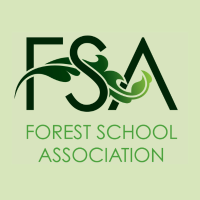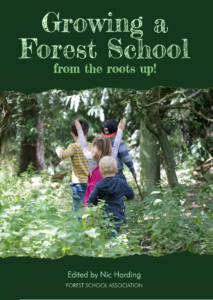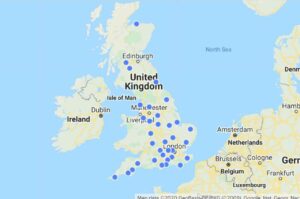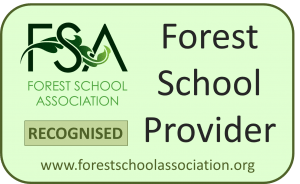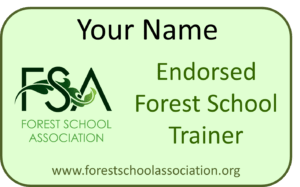Thank you bearing with us and our tech difficulties. The recording of the Nature Connection as a Tonic Webinar is now available to watch below:
Wednesday Webinar 13.05.20 – “Nature Connection as a Tonic”
(Whilst people arrived, people had a chance to share their gratitudes.)
Numbers:
about 150 registered
58 at 8pm start
up to 62 max
Down to 58 at end 9pm ish
38 at start of optional half hour
Lou led us in a sensory experience of our favourite places, sits spots or natural environments, thinking about how we experience through sights, sounds, smells, touches and even tastes of foraged foods and the air around us.
What are the differences between nature contact and nature connection?
Jon talked about the differences and similarities between nature contact and nature connection. As an analogy, he shared “his chair” – one that he has contact with, because he can see it and sit in it, but his connection is deeper, through his experiences and memorable times sitting in it.
He shared some of his experiences and research with learners he worked with in Sheffield and the Peak District in the 1980’s. Generally those in the Peak District didn’t seem to have the deep relationship with the landscape as they had little access to it and those coming out to the national park, while they enjoyed coming to it saw it as a background in which to do things. Surprisingly those who played more in local greenspaces and in so called ‘wasteland’ in the city had a deeper connection with these natural areas because of long term contact, playing in local green spaces regularly. This included, for example a Youth Group who campaigned against the development of one of their natural spaces wanting to protect the trees, plants and space there, they showed compassion as well as advocacy for the non human – a real important part of nature connection. Jon felt gratitude for wild places is an important part of connection – it becomes reciprocal. He also felt that some of the youngsters really did become ‘part and parcel’ of these bits of land – it is this identification with plants, animals and elements that signifies deeper connection.
Miles Richardson from the University of Derby, a researcher into nature connection has looked at this subject over recent years see www.findingnature.org.uk
What do we mean by Nature connection?
He suggests 5 pathways that define it –
Contact, through the senses…
Emotion, a sense of feeling alive, living through the mind and diging into the physical senses in the body that reflect ‘feelings’.
Sense of Beauty, taking time to appreciate the intricacies of different plants animals and spaces
Meaning, how we find similarities between our lives and the lives of the plants and creatures
Compassion, having empathy & respect for the life around.

Jon felt that the key to relational learning is moving from contact to ‘feeling at home’ in the natural world and really ‘becoming’ part of the ecosystem and these 5 aspects are an important part of that process. He went on to say that in order to get to know the natural world we have to see it anew without judgment and almost have to wipe away the teaching we have had. Trusting our sensory self and not the mind is key to this, after all the brain has to feel before it thinks.
He then posed Lou the question what do think are the benefits of a deeper nature connection as opposed to nature contact – what is the tonic?
Lou talked about the scientific research about the physical benefits of being in nature including the importance of increased Oxygen, Sunlight and the vitamins D, but also the profound effect that nature has on us and that it must be a deeper connection. How this contact and deeper psychotherapeutic connection with the natural world regulates our cortisol, stress chemical, levels. Also the deeper sensory immersion (not just the touching or smelling of a plant), but really feeling it inside our bodies can bring about profound healing, making this contact conscious can lead to a deeper relational connection. We now know about the energy interactions between the natural world and us that come through rich contact.
We are part of nature, all of our evolution has been in outdoors – she referenced the biophyllic relationship we have with nature (see E O Wilson). Many health authorities now see this biophyllic relationship and has informed green prescriptions. Some issues from the modern world stem from the way our lives are more sedentary and indoor lifestyle. In fact recently Lou has literally had her life saved by this deeper nature connection.
Jon finished by talking about how the lockdown has enabled him to really get to know and ‘feel’ plants in a deeper way, even though all his life has revolved around plants and flowers (he has a degree and masters in ecology). He has recently got ‘inside’ the dandelion for the first time even though trained in botany and ecology, it has been a case of tapping into deeper feelings associated with the non-human. The facts can get in the way of a deeper connection if we are not careful. Then quoted Henry Thoreau, one of the key nature writers in the 19th century, from his milestone book Walden.
“It is only when we forget all our learning that we begin to know. I do not get any nearer than a hairs breadth to any natural object so long as I presume that I have an introduction to it from some learned man. To conceive of it with total apprehension I must for the thousandth time approach it as something totally strange. If you would make acquaintance with the ferns you must forget your botany. You must get rid of what is commonly called knowledge of them. Not a single scientific term or distinction is the least to the purpose, for you would fain to perceive something, and you must approach the object totally unprejudiced. You must be aware that nothing is what you have taken it to be…..You have got to be in a different state from common. Your greatest success will be simply to perceive things as they are.”
Then we posed the following question for discussion.
Question for discussion –
How do our Forest School or nature education practises help to develop nature connection that is deeper than nature contact?
Here is a summary of the discussion groups.
It seems that the common thought in all groups was that Forest School, because it is a long term programme following the seasons, it gives the two key things needed to build relationship and deeper connection – TIME and SPACE. In this we as leaders need to back off and give learners, and ourselves, the time to develop our own perceptions and practises regarding relationships with the natural world. This can be encouraged through sensitive interactions with learners encouraging to delve deeper through the language of feelings and sensations and by modelling a compassionate and keen awareness of the natural world.
Ideas from the group discussion:
Facilitating sharing of emotions of how it feels at FS?
Importance of time
Having sit spots – time for solitude and processing the relationship with the natural world
Discussion about how kids do it automatically but adults can be disconnected
Importance of parents being supportive of children exploring and coming into contact with nature
Importance of adult modelling
Power of gratitude – a doorway to connection. Gratitude journel
Initiatives eg THRIVE can support emotional dev and behaviours
Boundaries can help people feel safe – need to feel safe for connection
Sharing of stories
Lots of rich sensory contact is key which is pretty natural for early years but often needs to be a little more structured as we get older. No judgment means we can form our own relationships.
Using foraging to highlight respect for the plants – less trodden down afterwards.
Making time to be outside without controlling, or micro-managing
Giving credence to all experiences however different.
Persistence – connection may come in adulthood.
Creativity coming from the time of stillness – make time for expansive thoughts – A new way for education
Nature journaling
At this time of lockdown one leaders site is on a common – started an art project up there – children going up there and leaving messages with their families – put a hello, is there anyone out there? – children leaving messages saying how much they are missing their friends – parents loving the time up there, stones and towers being left. All messages are being left in natural materials eg stick sentences. A signifier of deeper connection with the site, an expression of feelings!
As a leader I am keeping my connection by going early to the woods when other people are not around – whilst I am going every day at the moment I am engaging and noticing so much more – trees are full of leaves – going for a walk every day at the moment has been a positive.
Lots of physicality getting into the mud/ leaves etc – so close to our woods – cow parsley, ash, blossom, it is overwhelming – being there every day you don’t see everything in quite the same way
Aggression lessens as child is touching, feeling, getting muddy – wonderful effect – transition back there is some tension but he is interacting positively with his peers, loves rolling back down the hill, adults joining in with the play – this is almost impossible in the classroom
Use musical instruments, use drums, then help them listen to the quiet
Use Singing Bowls, has a huge impact. Natural Sound.
Rhythms are detoxifying, cleansing etc
Group activities, bring children together. Connect at your own pace.
Being part of the Community of Nature, wider community. You are part of the community and nature.
The sense of smell creates great memories.
Many of the earth education and sharing nature with children activities start to tune in the senses and build connection….long term is the key.
When do we notice that connection? How do we recognise.
The emotion? Some thing where we are connecting or recognising an emotion, linking an emotion to past experiences, as well as prompting the creation of new emotive experiences through reflection activities.
Changes in seasons and differences in the way a site looks between visits.
Not focussing on knowledge, but giving opportunities for experiential learning.
Giving chance to share and role model emotional connections
Provide spaces within routines where they have time to connect – sit spots etc.
Favourite activities e.g. bug hunts/foraging – understanding their interests
Protective of their site.
Developing empathy over extended periods.
Does the area/catchment affect the connection – compassion. Involving learners in the maintenance of the site to build a sense of community.
Ethos of borrowing – periodic time
Sit spot
Storytelling and making in the natural world
Mapping
Field guides for Identifying
Birdsong & 5 voices
Celebration and routines
Hiding games
No watch- slowing down
Not cramming too much in – giving the children too much to do, allowing them just to ‘be’ in nature.
Thinking carefully about what kit you need- kit to facilitate the engagement rather than get in the way. This looks very different for different children.
Careful guiding to allow them to slow down and stop and look more closely. Sometimes, however, we need to leave them the time and space to investigate for themselves.
Importance of us needing to be connected ourselves so that we can model connection- passion, demonstrating fascination, our language.
Not to be discouraged if children don’t seem to ‘get it’. The impact can be revealed much later- Sally’s example of reluctance to climb hills. Children don’t always reveal straight away how they’ve been impacted- sometimes need to process.
Making connections between different aspects of nature: snail and fern.
How to get over the hurdle – sometimes there is initial reluctance. Trying to make connections to people’s cultural background. Example of refugees from Africa coming to Canada- finding the links.
‘Seeing’ the natural world as a ‘Communion of subjects not collection of objects’ is a powerful frame for developing deeper connection to the woodland community.
Useful links and references:
8 shields Institute (global) – http://8shields.org/
Institute of Earth Education (global) – http://www.ieetree.org/ieetree_html5.html
Earth Ed uk – http://www.earthed.org.uk/
https://youtu.be/QMWSvUp0CYk – Coyote’s guide to connecting with Nature – TEd Talk with John Young
https://vimeo.com/411103765 – “Intermission” – Documentary of wildlife in London
https://wildsings.bandcamp.com/album/songs-of-the-wild – “Foresty” songs
‘Keeping a Nature Journal’ – discover a whole new way of seeing the world around you. Clare walker Leslie and Charles Roth. Storey Publishing. A really good book introducing simple and yet deeply observational and sensory ways of journaling, simple sketching and writing techniques to create deeper connections.
‘The Way Home’ – tales from a life without technology. Mark Boyle. One world publications. This is a lovely read. You sense his deep connection and gratitude.
In the closing community session thoughts were shared about how people were maintaining their own connections through spending more time outside and communicating to their groups such as Alison’s natural communication of messages on the common they use for their forest school. Emma has been communicating with her families via her Instagram page with some small clips encouraging people to connect with nature through their senses, search for beardandbirch on Instagram.
Jon shared the opening page of Thomas Berry’s – ‘Evening Thoughts’ reflecting on Earth as Sacred Community (Sierra Club)
“Since the appearance of Silent Spring by Rachel Carson in 1962, we have been reflecting on the tragic consequences of the plundering industrial society that we have brought into existence during these past few centuries. That we should have caused such damage to the entire functioning of the planet Earth in all its major biosystems is obviously the consequence of a deep cultural pathology.
Just as clearly, there is need for a deep cultural therapy if we are to proceed into the future with some assurance that we will not continue in this pathology or lapse into the same pathology at a later date. We still do not have such a critique of the past or a therapy for the present. Yet even without such evaluation of our current situation, we must proceed with the task of creating a viable future for ourselves and for the entire Earth community.
Two things are needed to guide our judgment and sustain our psychic energies for the challenges ahead: a certain alarm at what is happening at present and a fascination with the future available to us if only we respond creatively to the urgencies of the present. We are concerned here with the second of these requirements and wish especially to outline the conditions for entering a future that will lead to the larger fulfillment for which the entire planet, as well as our selves, seems to be destined.
The first condition for achieving this objective is to realize that the universe is a communion of subjects, not a collection of objects.”
Lou rounded off the evening with a quote from Rachel Carson – ‘A Sense of Wonder.’
“A child’s world is fresh and new and beautiful, full of wonder and excitement. It is our misfortune that for most of us that clear-eyed vision, that true instinct for what is beautiful and awe inspiring, is dimmed and even lost before we reach adulthood. If I had influence with the good fairy who is supposed to preside over the christening of all children I should ask that her gift to each child in the world be a sense of wonder so indestructible that it would last throughout life, as an unfailing antidote against the boredom and disenchantments of later years, the sterile preoccupation with things that are artificial, the alienation from the sources of our strength.
If a child is to keep alive his inborn sense of wonder without any such gifts from the fairies, he needs the companionship of at least one adult who can share it, rediscover with him the joy, excitement and mystery of the world we live in. Parents often have a sense of inadequacy when confronted on the one hand with the eager, sensitive mind of the child and on the other with a world of complex physical nature, inhabited by a life so various and unfamiliar that it seems hopeless to reduce it to order and knowledge. In a mood of self-defeat, they exclaim, “How can I possibly teach my child about nature – why, I don’t even know one bird from another!”
I sincerely believe that for the child, and for the parent seeking to guide him, it is not half so important to know as to feel. If the facts are the seeds that later produce knowledge and wisdom, then the emotions and the impressions of the senses are the fertile soil in which the seeds must grow. The years of early childhood are the time to prepare the soil. Once the emotions have been aroused – a sense of the beautiful, the excitement of the new and the unknown, a feeling of sympathy, pity, admiration or love – then we wish for knowledge about the object of our emotional response. Once found, it has lasting meaning. It is more important to pave the way for the child to want to know than to put him on a diet of facts he is not ready to assimilate.”
Closing Song:
“Trees grow tall in the heart of the forest, high in the sky and their roots go down, down in the earth.”
Chat recording
FSA News:
Covid-19 statement – https://forestschoolassociation.org/fsa-perspective-of-the-uk-governments-covid-19-recovery-strategy-for-members/#myaccount
FS ethos video of PowerPoint – https://youtu.be/L3mqjtevkQc
Glowing Embers blog – https://forestschoolassociation.org/an-introduction-to-the-glowing-embers-blog/
Main content:
8 shields Institute (global) – http://8shields.org/
Institute of Earth Education (global) – http://www.ieetree.org/ieetree_html5.html
Earth Ed uk – http://www.earthed.org.uk/
